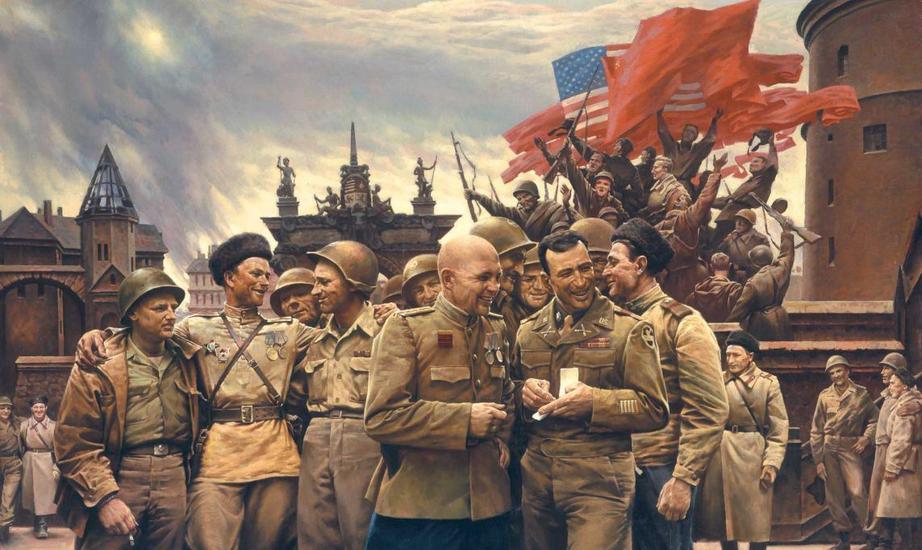You probably didn’t notice, but Trump and Putin are rebuilding a mighty military alliance
The Western press is preoccupied with demon Russia. We’re told that Russia through its tool, WikiLeaks, cost Hillary Clinton the election; that Russia hacked U.S. servers, effectively installing Donald Trump as president; that Russia is blackmailing Trump over sex scandals and secret business dealings; that Trump isn’t releasing his tax returns because they show Russian income; that Russia is intent on destabilizing the democracies in Europe as well as America, in fact, democracies everywhere; that Russia and its evil allies, Iran and Syria, are mortal foes of the West; that Putin wants to reassemble the Soviet Empire; that Putin is playing Trump for a fool; in short, that Russia is an unreconstructed enemy of the U.S. that must be kept always at arm’s length.
Some of that conjecture, perhaps, may even be true. What isn’t conjecture is that there is now a dramatic warming of ties, a mutual respect and a military alliance between Russia and America not seen in decades.
President Donald Trump speaks on the phone with Russian President Vladimir Putin in the Oval Office of the White House, January 28, 2017. Also pictured, from left, White House Chief of Staff Reince Priebus, Vice President Mike Pence, White House Chief Strategist Steve Bannon, Press Secretary Sean Spicer and National Security Advisor Michael Flynn.
To the jaw-dropping surprise of many, American troops are today fighting in Syria, in common cause and in co-ordination with Russia. The thaw in relations between the military superpowers began almost immediately after Trump’s inauguration, with Secretary of State Rex Tillerson — who had been honoured by Putin with Russia’s Order of Friendship — meeting his Russian counterpart, Foreign Minister Sergey Lavrov in Bonn on Feb. 16. “Tillerson confirms U.S ready to solve its problems with Russia — Lavrov,” read the headline from Tass, the Russian news agency. “We reiterated that we have common, coinciding interests, first of all, in what concerns resolute struggle against terrorism”, said a hopeful Lavrov, who lamented that relations between Russia and the U.S. “were seriously undermined by the Obama administration”.
This top-level diplomatic meeting complemented a top-level military meeting the same day in Baku, Azerbaijan, between General Joe Dunford, the chairman of the U.S. Joint Chiefs of Staff, and General Valery Gerasimov, the chief of the Russian military’s General Staff. Then on March 7, these two generals met again, this time in Antalya, Turkey, along with the chief of the General Staff of the Turkish Armed Forces.
Kulbisn this Saturday, May 14, 2016 file photo a couple kisses in front of graffiti depicting Russian President Vladimir Putin, left, and Republican presidential candidate Donald Trump, on the walls of a bar in the old town in Vilnius, Lithuania.
The meetings demonstrated the Trump administration’s competence, and its predecessor’s incompetence. In October, during the Aleppo crisis in Syria, the U.S. and Russia had their first serious face-off since the 1962 Cuban Missile Crisis, when Russia countered Obama’s decision to attack the Syrian army, saying it would shoot down any U.S. aircraft that threatened Russian personnel in Syria. Obama humiliatingly backed down then — he had failed to lay the groundwork for Russia-U.S. military co-operation to avoid accidental deaths, despite numerous pleas from an alarmed Dunford, who had sought permission to meet with the Russians to avoid high-stakes confrontations should the two countries find themselves functioning in the same war arena.
Obama never did give that permission but the Trump administration swiftly did, leading to the co-operation that now exists between the two forces on the ground in Syria.
The second military meeting, called to discuss how operations would unfold in Syria, was even more consequential, but this time because of who was and who wasn’t invited. The top brass from Turkey, a regional power, was present, as was the top military brass from the U.S. and Russia, the two global superpowers. Iran, an ally of Syria and, it thought, an ally of Russia’s, was not invited. The Trump administration in a matter of weeks had sidelined Iran, weakening, if not altogether breaking, the Russian-Iranian alliance.
That’s how Iran saw it as well. “Iran’s Role In The Arena Of The Syrian Developments Is Being Eliminated,” the Iran Diplomacy website wrote four days later, noting that the Americans and the Russians had been co-ordinating, and commenting bitterly that its Russian ally had abandoned it. “A Russian proverb says: ‘If you aren’t sitting at the table, you are (being eaten) at the table.’ Iran was not at the table in Antalya.”
That Russia would see its interests aligning more with the U.S. than with Iran is no surprise. Russia is a natural ally of the United States, notwithstanding the dark decades of the 20th century when it fell under a communist dictatorship. The Russian czars identified with the West and were allies of the West; the West admires Russian literature, Russian music and Russian art. Russia shares with the West a Judeo-Christian heritage and, along with other Western nations, has been protective of the Holy Lands. Iran, in contrast, is a natural enemy of Russia’s — the two countries fought numerous wars in the past and Iran’s Shiite’s have been historic enemies of Russia’s many Sunni Muslims as well as its Christians.
President Obama famously hoped for a “Russian reset” with America but instead, over a period of eight years, he renewed hostilities between these two great powers. President Trump, in his first month in office, accomplished that reset, and in his second separated Iran from Russia. His Russia-obsessed critics might want to add these facts on Russia to the list of Russian factoids they’ve been assembling.

